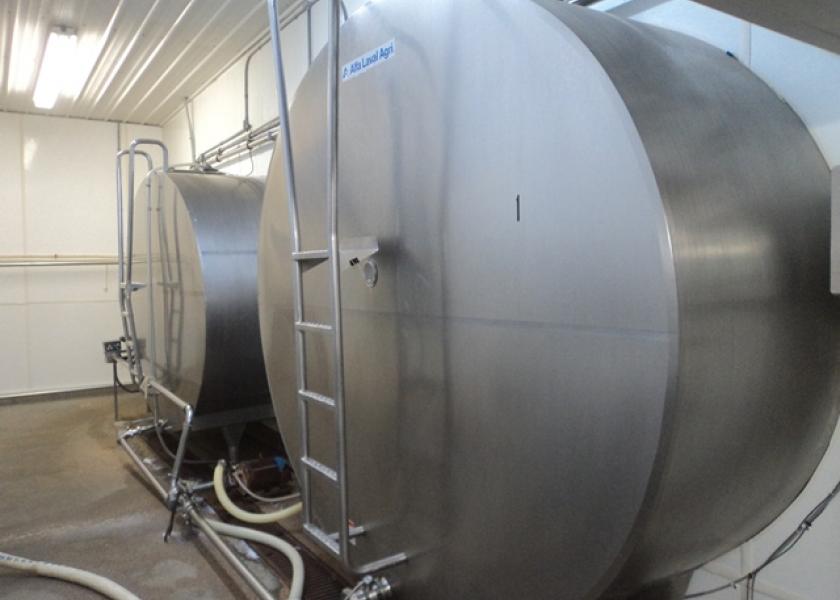Milk Market Psychology Has Changed

Milk futures and dairy product futures have been very strong over the past two months. Traders have become more optimistic due to the increase of dry product prices. Nonfat dry milk has been the leader with price reaching back to the highest level since early August 2014. Dry whey has been strong but not to the same extent as it has been trending higher since early September. Cheese and butter prices have not shown quite the same strength. In fact, block cheese price has remained in the sideways trading range it has been in since November. The recent strength of Class III futures would suggest cheese prices have been trending higher, but the price chart shows otherwise. The reason for the strength of Class III milk futures has been due to the strength of dry whey, but also a definite change in trader attitude. For quite some time, if any category in of cheese or dry whey remained steady or moved lower during a spot trading period, futures would fall back. The same held true for Class IV futures even though Grade A nonfat dry milk prices increased slowly.
However, recently dry whey and Grade A nonfat dry milk prices increased more rapidly and demand had improved as supplies tightened. This continued strength shifted the mindset of traders as dry product prices provided support to the market. The other factor was the trend of slowing milk production. Year-over-year milk production gains were seen earlier but have since trended lower. The August milk production report showed the least gain of the year of 1.1%. It was also the first month that production per cow fell below the previous year in quite some time.
High feed prices and low milk prices this year have had a significant impact on dairy profitability resulting in more farms exiting the business. High feed prices do not seem to be going away anytime soon but increasing milk prices might change the attitude of farmers for the time being. However, if cheese and butter prices are not able to break out of the long-term range and trend higher during the period of strong demand, milk prices will not be able to hold or perform very well during the early part of next year when demand slows significantly. Milk prices will also be dictated by the level of increased of milk production seasonally. If the outlook for milk prices improves, there may be more cows added as cows from farms going out of business are purchased by other farms to fill empty stalls.
Demand will determine the strength of milk prices as the rest of the year progresses and next year unfolds. We continue to see very strong exports but that has not had the desired impact on cheese and butter supplies as it has had on nonfat dry milk and dry whey products. An area of concern is the demand for fluid milk products. After a large spike in demand in the spring of 2020, demand has moved back to the trend of continual lower sales. Each category of milk products has had its ups and down of sales with some of it tied to a seasonal demand for various types of milk. Overall, the sales of fluid milk products continue to decline, and it has been for numerous years. Total conventional milk product sales for the month of August have declined by 4.8% over the past six years. That is a decline of 477 million pounds. Organic fluid milk sales have made up for some of the loss, but very little with a gain of 18.8% or just 46 million pounds. This trend has been taking place for a while and will continue this trend as other products are offsetting the sales of milk. Fortunately, demand for other dairy products continues to improve increasing overall demand for milk.
Robin Schmahl is a commodity broker and owner of AgDairy LLC, a full-service commodity brokerage firm located in Elkhart Lake, Wisconsin. He can be reached at 877-256-3253 or through their website at www.agdairy.com.
The thoughts expressed and the basic data from which they are drawn are believed to be reliable but cannot be guaranteed. Any opinions expressed herein are subject to change without notice. Hypothetical or simulated performance results have certain inherent limitations. Simulated results do not represent actual trading. Simulated trading programs are subject to the benefit of hindsight. No representation is being made that any account will or is likely to achieve profits or losses similar to those shown. There is risk of loss in commodity trading may not be suitable for recipients of this publication. This material has been prepared by an employee or agent of AgDairy LLC and is in the nature of a solicitation. By accepting this communication, you acknowledge and agree that you are not, and will not rely solely on this communication for making trading decisions.







